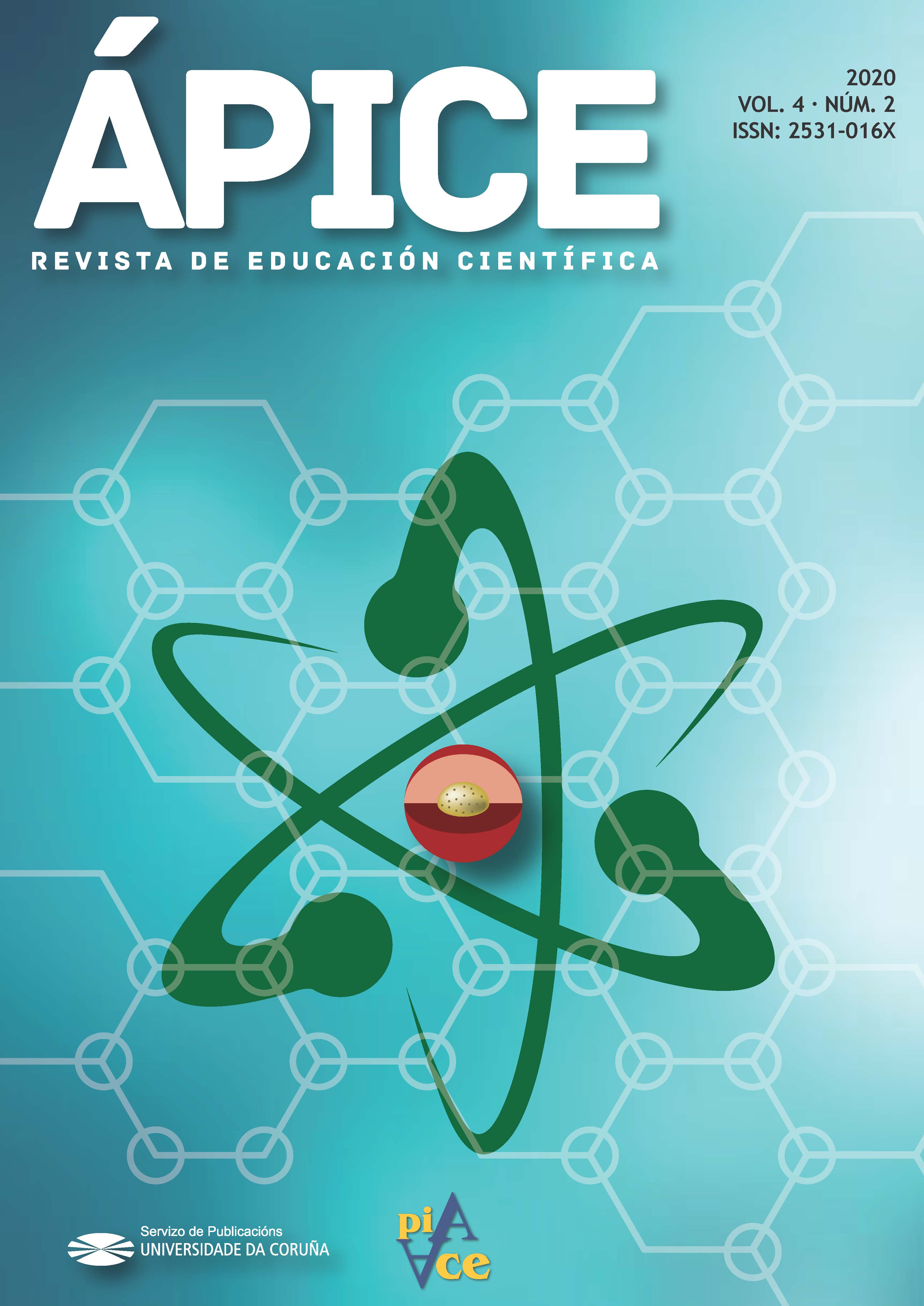¿Entras a la cueva? Una experiencia multisensorial para trabajar las Ciencias en la etapa de Educación Infantil
Contenido principal del artículo
DOI:
https://doi.org/10.17979/arec.2020.4.2.5755Resumen
Este trabajo muestra el diseño, planificación, implementación en el aula y análisis de una experiencia multisensorial dirigida a niños de Infantil en la que se trabajan contenidos científicos. El primer objetivo consiste eneducar sensorialmente al alumnado mediante una exploración en la que utilizan los cinco sentidos de manera simultánea a la vez que disfrutan de las sensaciones que ofrece la manipulación de materiales naturales. El segundo objetivo es que los maestros valoren positivamente la educación sensorial en ciencias y reconozcan su insustituible valor didáctico en el proceso de enseñanza-aprendizaje. Se analiza cómo la actividad permite al alumnado experimentar, sentir, pensar y describir las propiedades de los materiales de su entorno inmediato a través de los cinco sentidos paralelamente. Finalmente, se aporta vocabulario científico para trabajar la educación sensorial con el objetivo de que los niños sean capaces de describir objetos o sensaciones en otros contextos.
Palabras clave:
Fuente de financiación:
Detalles del artículo
Referencias
Borgerding, L.A. y Raven, S. (2018). Children´s ideas about fossils and foundational concepts related to fossils. Science Education, 102, 414-439. DOI: https://doi.org/10.1002/sce.21331
Cantó Doménech, J., de Pro, A. y Solbes, J. (2016). ¿Qué ciencias se enseñan y cómo se hace en las aulas de educación infantil? La visión de los maestros en formación inicial. Enseñanza de las Ciencias, 34(3), 25-50.DOI: https://doi.org/10.5565/rev/ensciencias.1870
De Puig, I. (2004). Persensar. Percibir, sentir, pensar. Barcelona: Octaedro.
Díez Navarro, M.C. (2013). 10 ideas clave. La educación infantil. Barcelona: Graó.
Driver, R.,Guesne, E. y Tiberguien, A. (1989). Ideas científicas en la infancia y en la adolescencia. Madrid: MEC y Morata.
Elm, A. y Nordqvist, I. (2019).The research circle – a tool for preschool teachers´ profesional learning and preschool develpment.European Journal of Teacher Education, 42(5), 621-633. DOI: https://doi.org/10.1080/02619768.2019.1652899
Fernández Manzanal, R. y Bravo Tudela, M. (2015). Las ciencias de la naturaleza en Educación Infantil. El ensayo, la sorpresa y los experimentos se asoman a las aulas. Madrid: Ed. Pirámide.
Franco, J.P. y Llinares, C. (2019). Materiales en la escuela infantil 0-3: objetos que tejen la vida cotidiana. Aula de Infantil, 101, 13-16.
Gardner, H. (2005). Inteligencias múltiples. La teoría en la práctica. Madrid: Paidós.
García-Carmona, A., Criado, A.M. y Cañal, P. (2014). Alfabetización científica en la etapa 3-6 años: un análisis de la regulación estatal de enseñanzas mínimas. Enseñanza de las Ciencias, 32(2), 131-149. DOI: https://doi.org/10.5565/rev/ensciencias.817
Gutiérrez, B. (1998). La ciencia empieza en la palabra. Barcelona: Península.
Hernández-Sampieri, R., Fernández, C. y Baptista, P. (2006). Metodología de la investigación. México D.F.: McGraw-Hill/Interamericana.
Mazas, B., Gil-Quílez, M.J., Martínez-Peña, B., Hervas, A. y Muñoz, A. (2018). Los niños y las niñas de infantil piensan, actúan y hablan sobre el comportamiento del aire y del agua. Enseñanza de las Ciencias, 36(1), 163-180.DOI: https://doi.org/10.5565/rev/ensciencias.2320
Mellado, V., Borrachero, A. B., Brígido, M. y Melo, L.V. (2014). Las emociones en la enseñanza de las ciencias. Enseñanza de las Ciencias, 32(3), 11-36. DOI: https://doi.org/10.5565/rev/ensciencias.1478
Montiera, S.F. y Jiménez-Aleixandre, M.P. (2016). The practice of using evidence in kindergarten: the role of purposeful observation. Journal of Research in Science Teaching, 55(8), 1232-1258.DOI: https://doi.org/10.1002/tea.21259
Real Decreto 1085/2008, de 28 de marzo, por la que se aprueba el currículo de la Educación Infantil y se autoriza su aplicación en los centros docentes de la Comunidad Autónoma de Aragón. Boletín Oficial de Aragón, de 14 de abril de 2008.
Sugrañes, E., Alós, M., Andrés, N., Casal, S., Castrillo, C., Medina, N. y Yuste, M. (2012). Observar para interpretar. Actividades de vida cotidiana para la educación infantil (2-6). Barcelona: Graó.
Vega, S. (2012). Ciencia 3-6. Laboratorios de ciencias en la escuela infantil. Barcelona: Graó.
Vila, B. y Cardo, C. (2012). Material sensorial (0-3 años). Manipulación y experimentación. Barcelona: Graó.
Westerhoff, N. (2010). La neurodidáctica a examen. Mente y cerebro, 44, 34-40.



